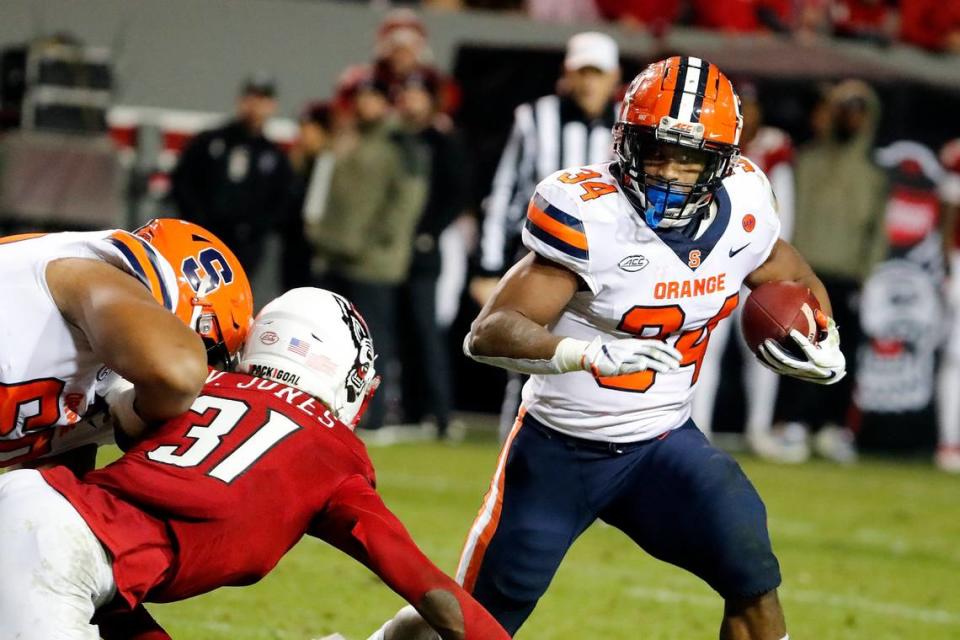Dolphins draft preview: Could Miami finally take a running back with a high pick?
- Oops!Something went wrong.Please try again later.
- Oops!Something went wrong.Please try again later.
- Oops!Something went wrong.Please try again later.
- Oops!Something went wrong.Please try again later.
- Oops!Something went wrong.Please try again later.
- Oops!Something went wrong.Please try again later.
- Oops!Something went wrong.Please try again later.
- Oops!Something went wrong.Please try again later.
Despite speculation that the Dolphins could swing for a big upgrade to the running game this offseason, the team re-signed all four running backs who were set to hit free agency.
Miami ranked tied for 18th in rushing yards per attempt (4.3) and 25th in yards per game (99.2) in 2022. But at the NFL’s annual owners meetings last month, head coach Mike McDaniel said he remains bullish on the running game led by Raheem Mostert and Jeff Wilson Jr.
“We didn’t run the ball, not because they didn’t run the ball well,” McDaniel said. “We didn’t run the ball well in games that we were overly injured or some games I just didn’t call enough runs. So when you look at it historically if you can get a runner 4.5-plus [yards per attempt], they’re doing something pretty good.
“I think we were able to get those two guys together which was very important, and I see them as a big part of our team and just the fabric and who we are as human beings; they really contribute to that locker room. I’m very excited to get those guys and I honestly believe they’re playing their best ball their careers.”
Though the raw numbers suggest Miami was an average running team, Mostert and Wilson were an efficient duo, especially after the Dolphins acquired Wilson in a mid-season trade. According to Sharp Football Analysis, Wilson failed to gain yards on 11.9 percent of his carries as a Dolphin, the third-best rate in the NFL. 13.1 percent of Wilson’s carries also went for 10 or more yards during that span, the eighth-best rate, while 16.4 percent of Mostert’s carries went for at least 10 yards, the third-best rate.
Nonetheless, in a deep draft class for running backs, the Dolphins could target a difference-maker with the No. 51 overall pick or in the later rounds.
In the second of a series of draft previews, the Miami Herald will look at the team’s running back options. Next is tight end.
Depth chart
Projected starters: Raheem Mostert, Jeff Wilson Jr.
Reserves: Salvon Ahmed, Myles Gaskin
WHAT DO THE DOLPHINS NEED?
Another dynamic option. Mostert and Wilson are expected to carry the load in the backfield. Ahmed and Gaskin were brought back on one-year deals that have small guarantees, so their spots on the 53-man roster are by no means secure. The Dolphins didn’t get a ton of production in their passing game from their running backs, but that was more a byproduct of an offense that prioritized getting the ball in the hands of wide receivers Tyreek Hill and Jaylen Waddle. However, with the departure of tight end Mike Gesicki and wide receiver Trent Sherfield, who accounted for 103 targets, there could be room for a back who can make plays not only as a runner but as a pass-catcher.
Here are running backs the Dolphins could target in the draft:
Alabama’s Jahmyr Gibbs
Why he’d fit: Gibbs, 5-9 and 199 pounds, is a big-play threat with the speed and quickness to test defenses on the edge and separate in a blink. He also may be the best pass-catching back in the class. Gibbs caught 103 passes in three years at Georgia Tech and Alabama and led all running backs with 25 receptions of 15-plus yards and 39 forced missed tackles on receptions, according to Pro Football Focus, with just two drops. He can run routes out of the backfield or motion into a wide receiver alignment.
Why he might not: Gibbs’ size may prevent him from being a bell-cow player, especially on inside runs, and there are questions about his pass protection ability — but he’ll likely be running routes anyway if he’s on the field on obvious passing situations.
Projection: Round 2
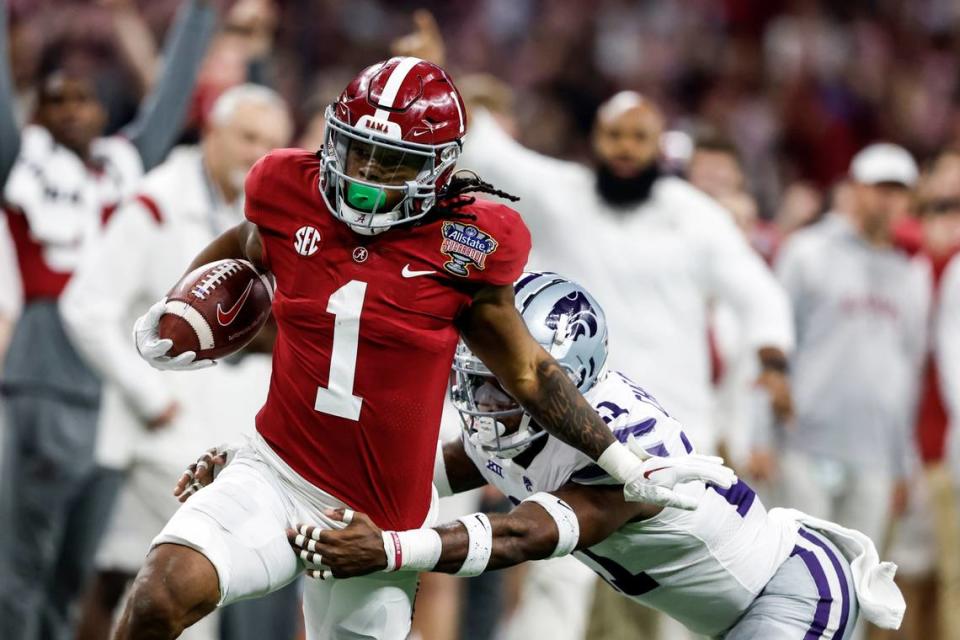
UCLA’s Zach Charbonnet
Why he’d fit: Charbonnnet, 6-foot and 214 pounds, is a well-built, downhill runner who can break tackles and make defenders miss in the open field on occasion.
Why he might not: Charbonnet isn’t a burner — he ran 4.53 in 40-yard dash — and doesn’t have the same foot quickness as other top backs in the Draft.
Projection: Round 2
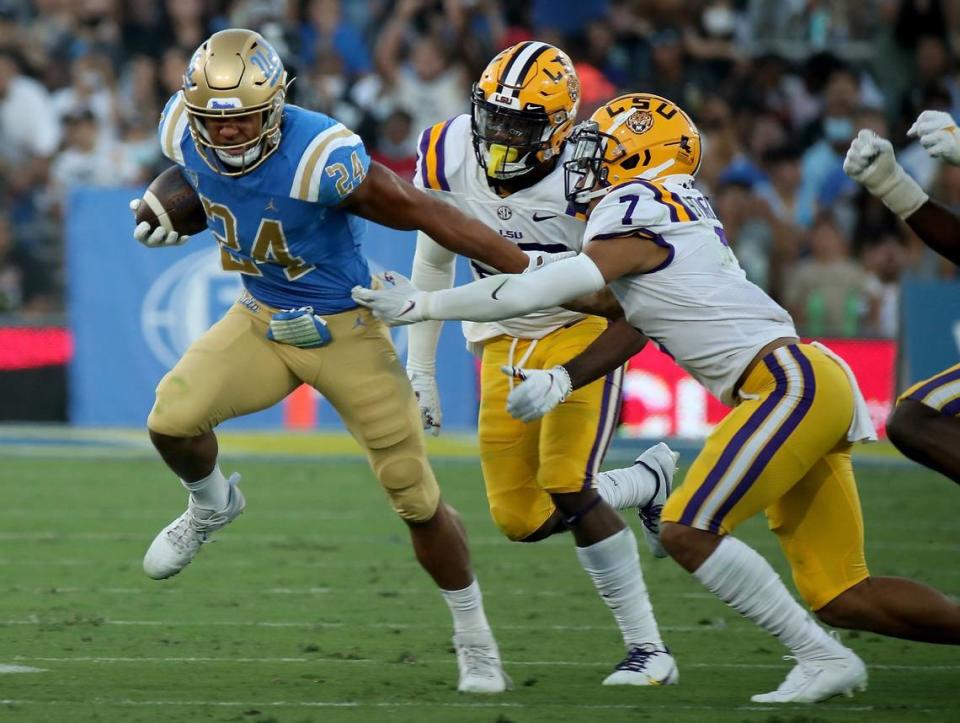
Auburn’s Tank Bigsby
Why he’d fit: Bigbsy, 6-foot and 210 pounds, is another powerful runner who fights through tackles and made the most of a less-than-steller offensive line this past season. He also has experience in a zone-heavy scheme.
Why he might not: Fumbles have been a problem for Bigsby at points in his career and he wasn’t much of a factor as a pass-catcher. While Bigsby has the quickness to cut and hit holes, he can be impatient at times in letting his blocking develop.
Projection: Round 3
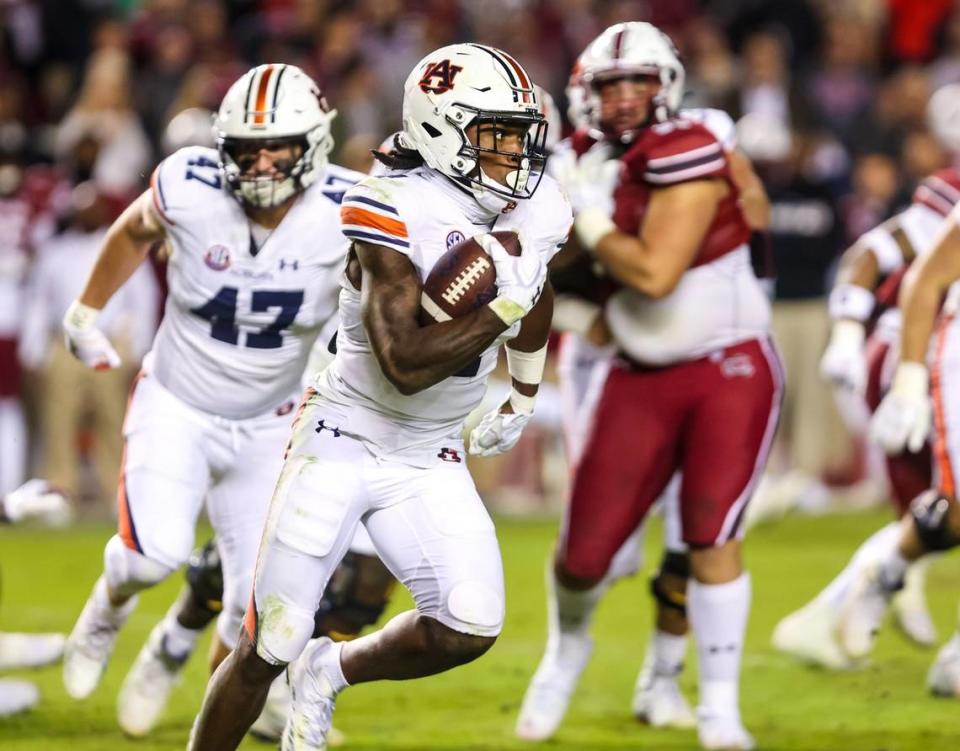
Texas A&M’s Devon Achane
Why he’d fit: Achane, 5-8 and 188 pounds, was in a zone-heavy scheme in college and might be the most electric running back in this year’s class, running a 4.32 40-yard dash at the NFL Scouting Combine. And despite his frame, Achane runs hard on inside carries and displays good contact balance. Achane also has return experience.
Why he might not: His size creates concerns about durability — he will likely never become a bell-cow back — and his ability in pass protection. Achane has potential as a pass-catcher but will need to improve his route running to make more of an impact.
Projection: Round 3-4
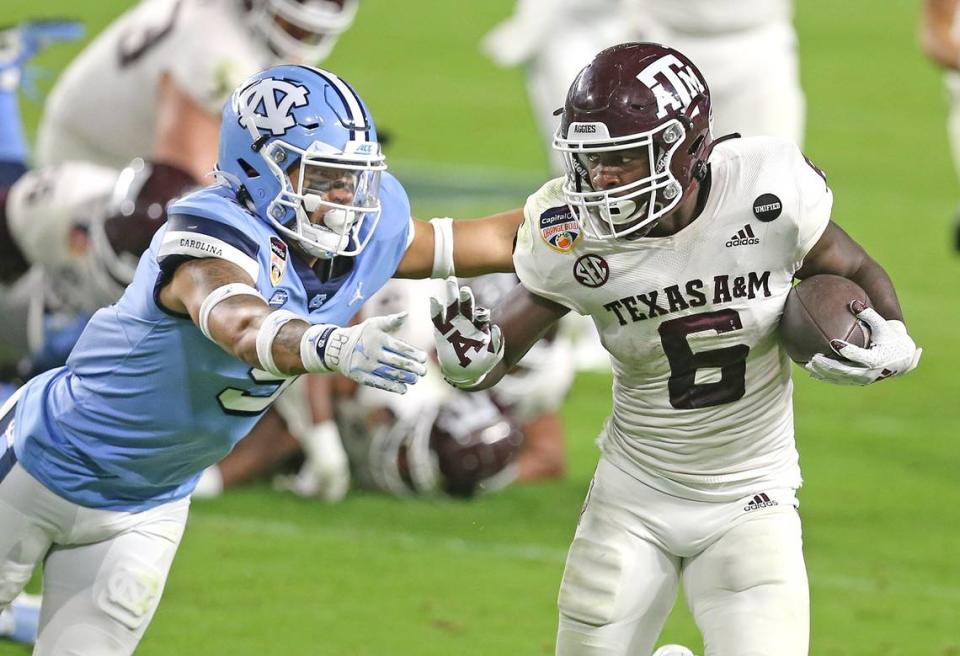
Syracuse’s Sean Tucker
Why he’d fit: Tucker, 5-9 and 207 pounds, is a tough runner whose strong lower body allows his to shed tacklers with ease. He also shows good burst through running lanes.
Why he might not: Tucker doesn’t have elite long speed and is inconsistent as a pass-catcher; he dropped 10 of 73 catchable passes in his career, according to Pro Football Focus. Tucker was also medically red-flagged at the combine, which prevented him from participating in drills. He also did not participate at his pro day but he posted a video to Twitter last month of his own workout and said he’s confident the issue will be “cleared shortly.”
Projection: Round 4
